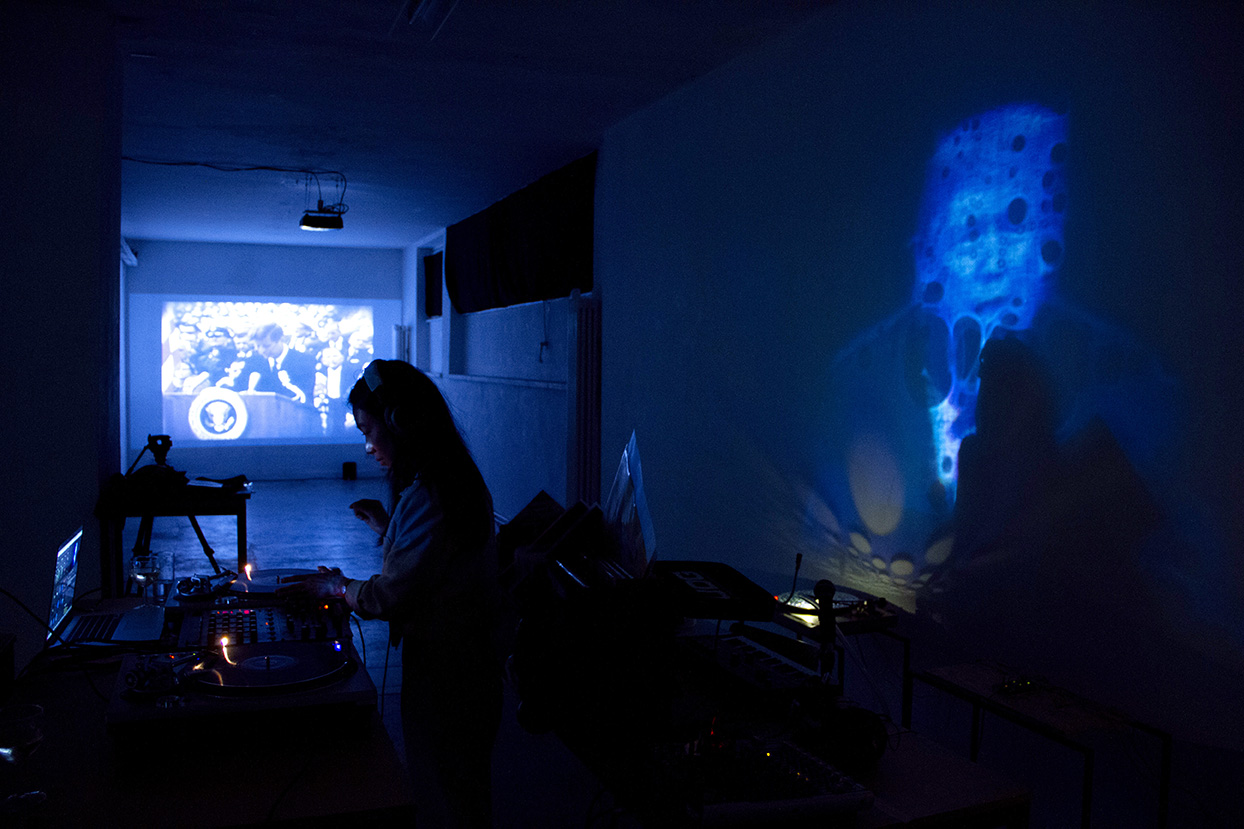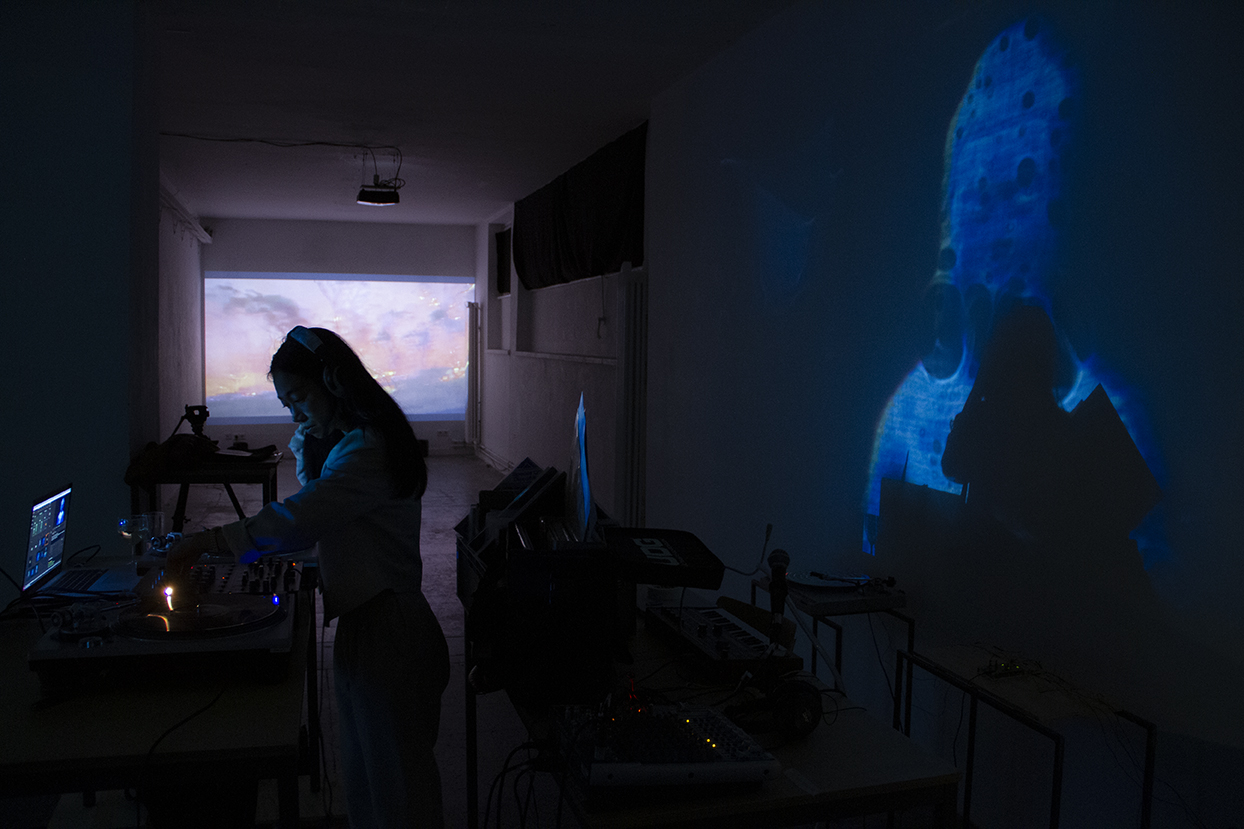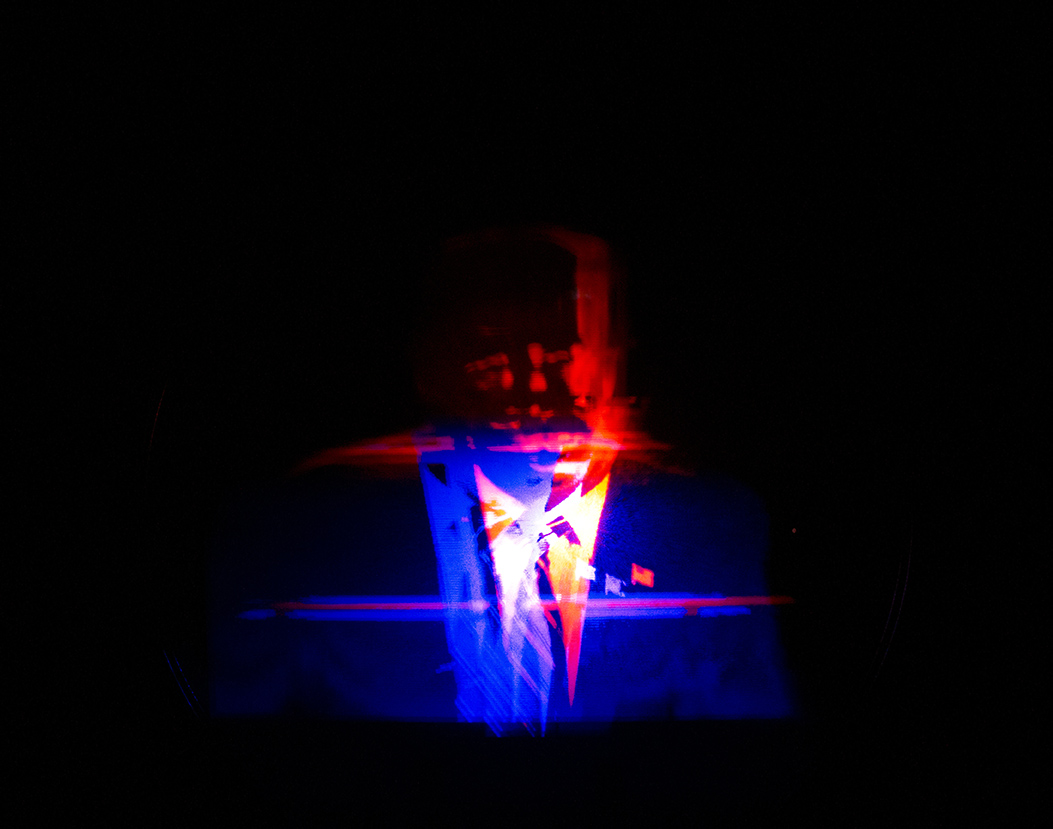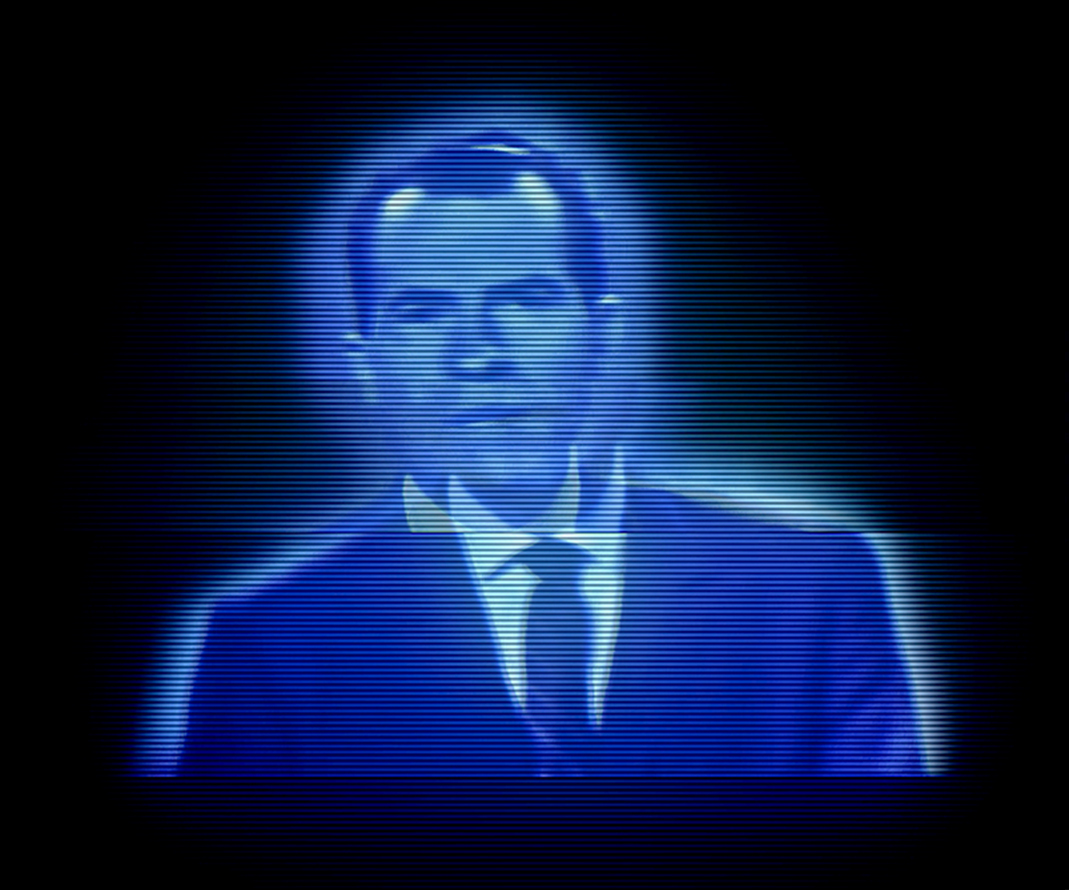(I am) Unable To See Things
As They Really Are
Synthesizer, micro phone, talk-box, sound equipements, sound sensor, holographic film, projectors, modified record player, Arduino board, LED lights, mirror, electronic components / Dimension variable / 2019
Kunsthalle am Hamburger Platz Berlin, Germany
Kunsthalle am Hamburger Platz Berlin, Germany
신디사이저, 음향 믹서, 센서, 혼합 매체 / 가변 설치 / 2019
쿤스트할레 함부르거 플라츠, 베를린, 독일
쿤스트할레 함부르거 플라츠, 베를린, 독일










“(I am) Unable To See Things
As They Really Are”
The moon is the earth’s only natural satellite which orbits planet earth. In other words, the earth and the moon is in an absolute interdependent relationship.
To our ancestors the moon was the projection screen for wishes, oaths and imagination looking at it from the far distance. In the sense, it was the oldest and first “tele-vision” which literally means “far-look” in Ancient Greek.
The dream of an adventure on the moon might be begun since Galileo’s ‘telescope’. Yet, it was merely a wish for a journey, not an escape nor an experiment.
The first moon landing in 1969 opened up a door to the new era that changed the future of the human race. Since then, the moon is no longer an unreachable twinkling star but a conquerable object. The exponential scientific and technological growth along with the recent cases of space probes accelerates the process of “earth alienation”.
What concerns me is that we have been desensitized and distanced from our own selves by falling into a vortex of rapid industrialization and man-made climate change. This spinning blurs all layers of meaning that surrounds us, to such a degree that it is near impossible to see things as they really are, but merely seeing them as they appear to be.
To our ancestors the moon was the projection screen for wishes, oaths and imagination looking at it from the far distance. In the sense, it was the oldest and first “tele-vision” which literally means “far-look” in Ancient Greek.
The dream of an adventure on the moon might be begun since Galileo’s ‘telescope’. Yet, it was merely a wish for a journey, not an escape nor an experiment.
The first moon landing in 1969 opened up a door to the new era that changed the future of the human race. Since then, the moon is no longer an unreachable twinkling star but a conquerable object. The exponential scientific and technological growth along with the recent cases of space probes accelerates the process of “earth alienation”.
What concerns me is that we have been desensitized and distanced from our own selves by falling into a vortex of rapid industrialization and man-made climate change. This spinning blurs all layers of meaning that surrounds us, to such a degree that it is near impossible to see things as they really are, but merely seeing them as they appear to be.
당시 조상들은 현대의 과학적인 방식으로 지구와 달의 상관관계를 알았던 것은 아니지만, 달이 그들의 삶에 필수적인 공존적 존재라는 것을 이해하고 있었다. 그들은 지구(땅)위의 인간과 하늘의 달의 ‘거리’를 존중하였다. 그렇게하여 지구인은 ‘인간’대로 달은 ‘달’대로 그저 공존할 수 있었던 것이다. 따라서 원시시대의 달은 밤이 되면 누구나 바라볼 수 있었던 대상이었지만, 소유의 대상은 아니었던 것이다. 닿을 수 없는 존재, 그래서 동경의 대상이었던 달은, 갈릴레오의 망원경의 발명으로 ‘어쩌면’ 닿을 수 있는 존재가 되어버렸다. 닿을 수 없었던 멀고도 먼 거리의 축소는 달을 소유의 대상으로 상상할 수 있도록 하였다. 그리고 달을 향한 ‘동경’이 달에 닿고자 하는 ‘욕망’으로 전환되었다. 그리고 이 모험에 대한 욕구는 인간의 소유욕을 자극했다. 영영 닿을 수 없을 것 같던 달이 시각적으로 가까워지자, 동경의 존재였던 달은 ‘관찰’의 대상이 되었고, ‘연구’의 대상이 되었으며, ‘탐험’의 대상이자, ‘정복’의 대상이 되었다. 이처럼 인간의 삶에 공존의 존재였던 달은 이제 ‘특정한’ 누군가에게 속할 수 있는 존재가 된 것이다. 그것이 당시의 과학자나 천문학자의 특권이 되었고, 이 특권은 현재도 여전히 그들이 전적으로 소유하고 있다.
1969 년 첫 달 착륙은 인류의 미래를 바꾼 새로운 시대의 문을 열었다. 그 이후로 달은 더 이상 도달 할 수없는 반짝 반짝 빛나는 별이 아니라 정복 할 수있는 물체로 전락했다. 최근의 우주 탐사선 사례와 함께 기하 급수적인 과학 기술 성장은 "지구 소외"의 과정을 가속화하고 있다.
내가 우려하는 것은 우리가 급속한 산업화와 인간이 초래한 기후 변화의 소용돌이에 빠지면서 둔감해지고 우리 자신과 멀어졌다는 사실이다. 이 소용돌이는 우리를 둘러싼 의미의 모든 층을 흐리게하여 사물을 단순히 보이는 그대로만 보도록 할 뿐, 실제 그대로 보는 것을 거의 불가능하게 만든다.
1969 년 첫 달 착륙은 인류의 미래를 바꾼 새로운 시대의 문을 열었다. 그 이후로 달은 더 이상 도달 할 수없는 반짝 반짝 빛나는 별이 아니라 정복 할 수있는 물체로 전락했다. 최근의 우주 탐사선 사례와 함께 기하 급수적인 과학 기술 성장은 "지구 소외"의 과정을 가속화하고 있다.
내가 우려하는 것은 우리가 급속한 산업화와 인간이 초래한 기후 변화의 소용돌이에 빠지면서 둔감해지고 우리 자신과 멀어졌다는 사실이다. 이 소용돌이는 우리를 둘러싼 의미의 모든 층을 흐리게하여 사물을 단순히 보이는 그대로만 보도록 할 뿐, 실제 그대로 보는 것을 거의 불가능하게 만든다.
© 2025 NAMIA LEIGH
